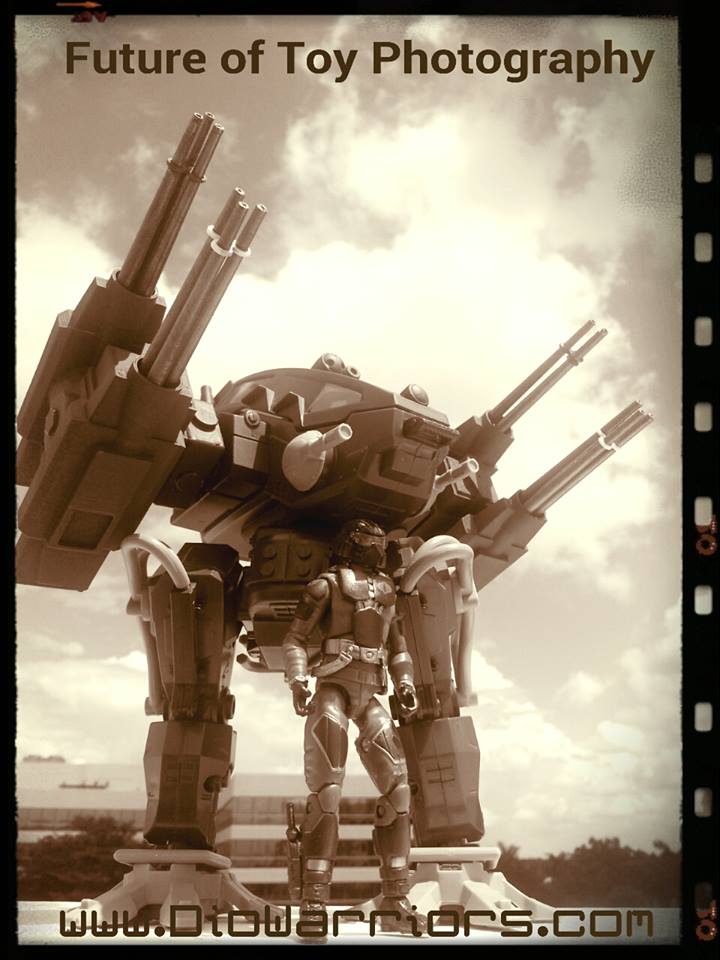The Modular Diorama System: Toy or Model?
DioWarriors.com makes a series of props for building modular display sets for 1:18 scale toys. The system is actually a construction system where a person builds a display set by connecting one component to another at specific attachment points. Unlike a toy, which may have some minor assembly, a DioWarriors prop requires full assembly, including full hands-on working. So, is the DioWarriors system a toy or model?
The DioWarriors objects are 3D printed. When someone orders items they are buying the raw 3D printed output. No post work is done -- the items are not painted, not sanded. Instead the customer must work with the item if any clean up is needed. Parts are also not assembled. A wall might be just a frame with hollowed areas where a cabinet door is to be placed. Things might need gluing. So what DioWarriors actually offers is something similar to a model kit.
The DioWarriors objects are 3D printed. When someone orders items they are buying the raw 3D printed output. No post work is done -- the items are not painted, not sanded. Instead the customer must work with the item if any clean up is needed. Parts are also not assembled. A wall might be just a frame with hollowed areas where a cabinet door is to be placed. Things might need gluing. So what DioWarriors actually offers is something similar to a model kit.
Model Kits in the 1:18 Toy Market
DioWarriors.com is a toy photography web site which sells 3D printed components for the purpose of enhancing the toy photography hobby. The market is not the toy themselves -- namely 1:18 scale figures such as GI Joe, Star Wars and others -- but the hobbyists. The age groups tend not to be children either, but high school and college age, active and retired military, professionals and others, everyone except children. It seems kids are not into the toy photography hobby, but their older siblings and parents are.
Knowing this the folks at DioWarriors have designed their diorama system into a type of model kit where the products are stored in zip-lock style bags, loose and need to be assembled. Assembly may require trimming parts that fit a bit too tightly, or sanding objects where the signs of the 3D printing process -- the layering -- is obvious, or gluing where the parts have no other way to attach. The assembled display may need to be painted and water slide decals added. A lot of work for a toy, and in the toy market this amount of work is rare. But the amount of work is not rare for those who do customs -- modding a figure or vehicle.
Those in the toy custom communities do a lot of hands-on work changing the appearance of a toy. But the DioWarriors props are not customs. They are raw 3D printed objects unfinished by the end user's standpoint. It is up to the person to finish the items bought. So in this way the DioWarriors products resemble a model kit.
Fine scale model kits have to be assembled. It is up to the skill of the hobbyist that determines how well the kit looks when finished. Skills need to be prepared: a serious model builder may spend weeks researching the subject of the kit, studying rust and weathering then practicing the techniques necessary to reproduce the effects onto the model. A lot of work gets put into building a kit, and yet the market for the DioWarriors modular sets is not the fine scale modelling community, but the toy photography community.
The toy market typically eyes children, not adult collectors, and especially not the niche of the adult collectors who take photos of their toys. With fine scale models taking macro photos of the kits displayed in a diorama is nothing new. Diorama displays of model kits are common, especially in a gaming or hobby store. But displaying toys in a diorama is not common. One reason is that the displays available are not in the proper scale. Another reason is the offerings simply do not exist. The genre's for 1:18 scale toys are extremely varied -- anywhere from military to science fiction to fantasy -- that an offering of props and sets do not exist unless popularity in a specific toy line is great enough. Another reason is the toy photography niche is very new and hasn't caught the eye of toy manufactures as a viable market.
So toy photography enthusiasts are left with two choices: hire someone to build a display or learn the skills needed to build one. It is in this light that the DioWarriors system comes into play. A cross of both toy and model kit, the system is a hybrid tapping into the common traits of the toy photography community: the need for specific, in scale, props in a modular form to satisfy the growth of a toy collection; and as build-able sets that the toy collector can assemble and customize to the specific need: the genre of the toy line as well as the tone of the photo.
So it's a bit of both: model kit-like modular system intended for a toy collecting niche that typically enhances their collections with custom built dioramas for photography purposes. It is neither a kit nor a toy, but a combination of both.




